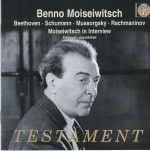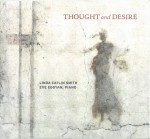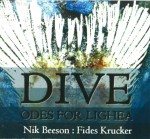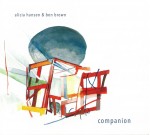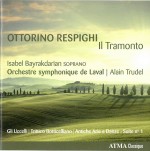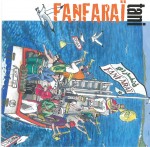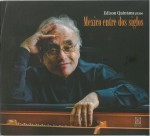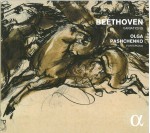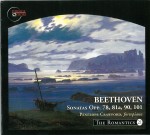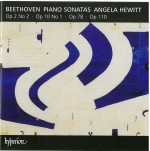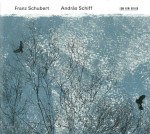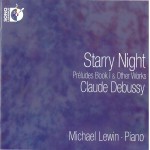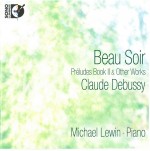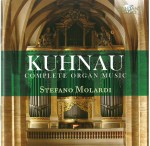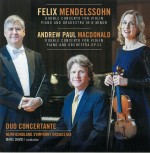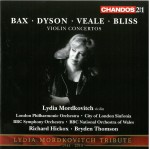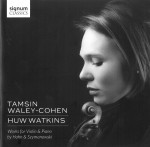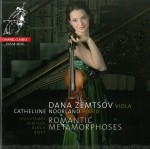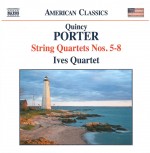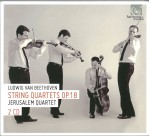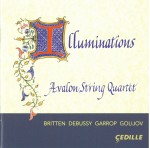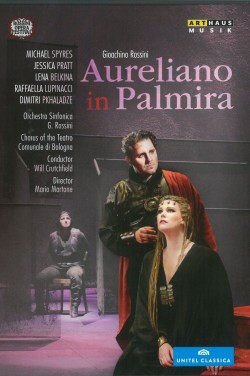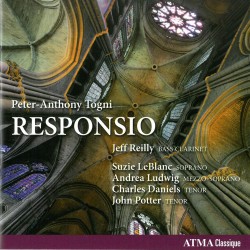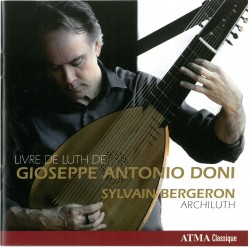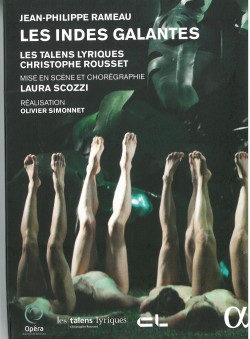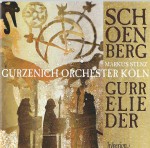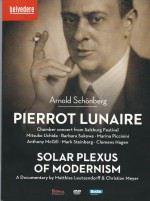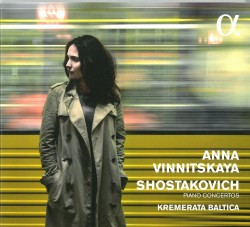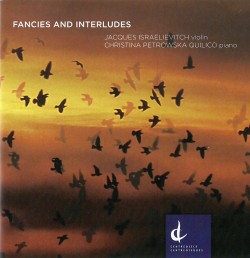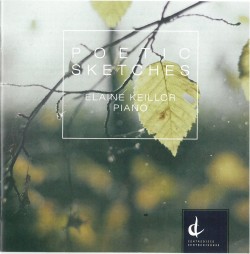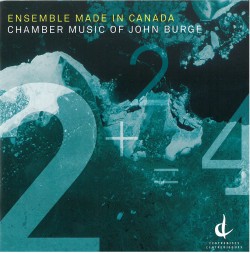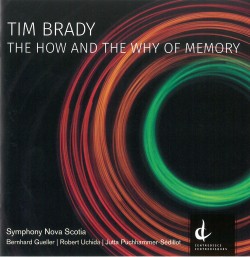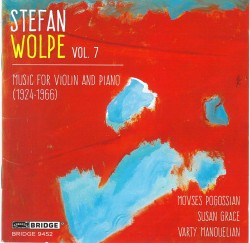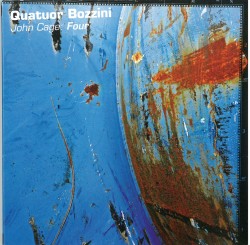Old Wine in New Bottles | Fine Recordings Re-Released - November 2015
Thanks to recordings, we can continue to appreciate earlier generations of performers whose special artistry would be completely lost but for the recording industry – in this instance EMI, who thankfully recorded as many artists as they did, including pianist Benno Moiseiwitsch (1890-1963). He was born in Odessa, the birthplace of many of the great ones: Vladimir de Pachmann, Mischa Elman, Emil Gilels, David and Igor Oistrakh, Nathan Milstein and others.
Moiseiwitsch espoused artistic values that today seem to have slipped away. His playing is so packed with meaning and nuances that the question of mere precision is quite irrelevant. Today we are swamped with pianists who outdo each other for accuracy and perfection but Moiseiwitsch, a natural pianist in the Romantic tradition, had a wonderful tone, achieving a continuity though a constant organic pulse, that finds music in every phrase where others find only notes.
A new collection from Testament, which already has earlier Moiseiwitsch releases, contains performances from 1946 to 1961 (SBT3.1509, 3 CDs). Included are Beethoven’s Waldstein Sonata, Schumann’s Kreisleriana, Pictures at an Exhibition, Beethoven’s Emperor Concerto and the Rhapsody on a Theme by Paganini. The third disc has over 70 minutes of informative interviews given in New York and on the BBC.
The Waldstein is a revelation. The performance from 1958 is instantly captivating with a magic that is, I believe, unique to Moiseiwitsch. In the second movement he finds the sense of indolent suspension that conveys more than only the usual merely slow tempo.
Yes, the Waldstein is outstanding but when we turn to Kreisleriana we find the artist in home territory: “What never fails to appeal to me is Schumann.” The constant inflections that are needed to bring this composer off are organically natural to him.
While not technically a Richter, Moiseiwitsch’s Pictures at an Exhibition is not an exercise but is a fully searching treatment that fleshes out the emotional suggestion of each of these miniatures. Earlier in his career he had no interest in performing the work and ignored it over many years but eventually he was drawn to it and played it regularly but, in his own words, never the same.
Moiseiwitsch first toured the United States in 1919 and New York was no stranger to him. On July 19, 1961 he played the Emperor Concerto with Josef Krips and the Philharmonic in Lewisohn Stadium. The pianist had longtime affection and admiration for the work and he and Krips worked very well together.
Rachmaninov is a composer with whom Moiseiwitsch had a close personal relationship (revealed in the accompanying third disc of this set). Rachmaninov was having doubts about one of the variations in the Paganini Variations. He confided in Moiseiwitsch that when he wrote it, it was fine but playing it now he skipped a note. One thing led to another and Moiseiwitsch told him that a drink of crème-de-menthe would solve his problem. Later that evening Rachmaninov was coaxed into playing for some guests and he played the variation perfectly. Moiseiwitsch insisted it was the crème-de menthe and so, according to Moiseiwitsch, whenever Rachmaninov played the work, he first enjoyed a crème-de menthe. The Rhapsody on a Theme of Paganini is a showpiece for the kind of volatile collaboration Moiseiwitsch was able to forge with a great artist like Sir Adrian Boult. The tempi they discover here go to necessary but natural extremes yet they stick to each other like glue. The ensemble with the BBC Symphony is honestly thrilling and elicits our rapt attention, hanging on every note. The recording is of the performance given at a Proms concert on September 14, 1946 in The Royal Albert Hall and, although more than serviceable, is not of studio quality. Still, it is much better to have this performance than not.
Review
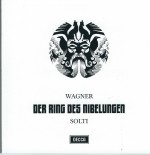 For 50 years the most talked-about, best-known recording of Wagner’s Ring Cycle is the Decca set from Vienna conducted by Georg Solti (4783702). Decca initially took quite a gamble producing such a massive and expensive project, not exactly sure that there would be a market. However, under the care of producer John Culshaw, the recording was made, opera by opera, over a period of years and the four individual operas – rather, music dramas – and the complete Ring set, have not left the catalogue since. Decca has repackaged the set using the latest 2012 remastering plus the two-CD set of Deryck Cook’s, An introduction to Der Ring Des Nibelungen explaining the themes associated with characters and objects in the drama. A CD-ROM of the complete libretto with English and French translations and two booklets about the Ring and synopses complete the package. Most noteworthy is the price of these 16 CDs – around $50! A case of “it’s so cheap I can’t afford not to buy it.”
For 50 years the most talked-about, best-known recording of Wagner’s Ring Cycle is the Decca set from Vienna conducted by Georg Solti (4783702). Decca initially took quite a gamble producing such a massive and expensive project, not exactly sure that there would be a market. However, under the care of producer John Culshaw, the recording was made, opera by opera, over a period of years and the four individual operas – rather, music dramas – and the complete Ring set, have not left the catalogue since. Decca has repackaged the set using the latest 2012 remastering plus the two-CD set of Deryck Cook’s, An introduction to Der Ring Des Nibelungen explaining the themes associated with characters and objects in the drama. A CD-ROM of the complete libretto with English and French translations and two booklets about the Ring and synopses complete the package. Most noteworthy is the price of these 16 CDs – around $50! A case of “it’s so cheap I can’t afford not to buy it.”
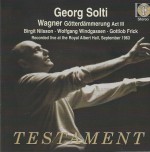 Testament has issued two sets of music from The Ring both featuring Birgit Nilsson singing Brünnhilde’s Immolation Scene. The first entry is the complete Act III of Götterdämmerung live from the Royal Albert Hall on September 6, 1963 with a full cast from the Royal Opera including Wolfgang Windgassen, Gottlob Frick, Marie Collier, Thomas Stewart, Barbara Holt, Gwyneth Jones, Maureen Guy and the Royal Opera Chorus and Orchestra (SBT 1506). This was, in effect, a dress rehearsal for the complete opera to be staged a few days later in Covent Garden. Given the venue, the Proms and all that, this would have been less demanding for Solti’s first public performance of this work. While it is not as perfect as Solti’s Vienna performance for Decca a year later, it does have a sense of occasion – a you-are-there reality in real space, an illusion that it seems cannot be convincingly faked electronically. Also, the listener knows that there are people attached to the voices and where they are. I enjoyed this immensely. Dynamic stereo sound courtesy of the BBC.
Testament has issued two sets of music from The Ring both featuring Birgit Nilsson singing Brünnhilde’s Immolation Scene. The first entry is the complete Act III of Götterdämmerung live from the Royal Albert Hall on September 6, 1963 with a full cast from the Royal Opera including Wolfgang Windgassen, Gottlob Frick, Marie Collier, Thomas Stewart, Barbara Holt, Gwyneth Jones, Maureen Guy and the Royal Opera Chorus and Orchestra (SBT 1506). This was, in effect, a dress rehearsal for the complete opera to be staged a few days later in Covent Garden. Given the venue, the Proms and all that, this would have been less demanding for Solti’s first public performance of this work. While it is not as perfect as Solti’s Vienna performance for Decca a year later, it does have a sense of occasion – a you-are-there reality in real space, an illusion that it seems cannot be convincingly faked electronically. Also, the listener knows that there are people attached to the voices and where they are. I enjoyed this immensely. Dynamic stereo sound courtesy of the BBC. 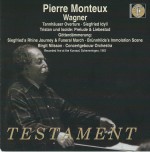 The other set from Testament is an all-Wagner concert conducted by Pierre Monteux with the Concertgebouw Orchestra from July 1, 1963 (SBT2 1507, 2 CDs, mono). We hear the Tannhäuser Overture, the Siegfried Idyll and the Prelude and Liebestod (with Nilsson) from Tristan. Following intermission, presumably, is Siegfried’s Rhine Journey and Funeral March followed by the Immolation Scene. Monteux was a master musician, a conductor who left his stamp, in varying degrees on whatever he directed. How different his Wagner is from Solti’s: Monteux’s is broader and more meaningful with a sweep missing under Solti. The listener feels an awareness that engenders different emotions. Recorded three months earlier than the Solti, Nilsson is in splendid voice and under Monteux, I would say, more sympathetic to the role.
The other set from Testament is an all-Wagner concert conducted by Pierre Monteux with the Concertgebouw Orchestra from July 1, 1963 (SBT2 1507, 2 CDs, mono). We hear the Tannhäuser Overture, the Siegfried Idyll and the Prelude and Liebestod (with Nilsson) from Tristan. Following intermission, presumably, is Siegfried’s Rhine Journey and Funeral March followed by the Immolation Scene. Monteux was a master musician, a conductor who left his stamp, in varying degrees on whatever he directed. How different his Wagner is from Solti’s: Monteux’s is broader and more meaningful with a sweep missing under Solti. The listener feels an awareness that engenders different emotions. Recorded three months earlier than the Solti, Nilsson is in splendid voice and under Monteux, I would say, more sympathetic to the role.


